City sculpture trails have become popular street art attractions across the United Kingdom and across the world. Whether this is a colourful cow or favourite animated character, unique interpretations bring interest in tourism and can raise awareness and funds for charities at auction following their exhibition.
 Above: city sculpture trail sculptures using a fibreglass elephant and giraffe as the base for the unique paintwork
Above: city sculpture trail sculptures using a fibreglass elephant and giraffe as the base for the unique paintwork
But what happens to these sculptures after they have been on display? And what can be done to protect them? Unlike museum houses or private artwork, city trail sculptures may have faced a multitude of environments and in some cases vandalism, they may also face challenges from fibreglass or more unconventional materials. In this article we will cover the value of these unique artworks and what can be done to preserve and restore them.
Popular city sculpture trails
An early and very successful example is a city sculpture trail known as CowParade which took place in Chicago in 1999. This exhibition of fibreglass cows was inspired by a concept for new public art in Switzerland a year earlier, under the title Land in Sicht. In 2000 the CowParade was taken to New York where almost 500 cows attracted over 40 million viewers in the streets, parks and plazas of the city, becoming the largest public art event in US history. In 2021, CowParade celebrated it’s 100th exhibition; it has now been seen in 75 cities around the globe including Manchester, London, Dublin and Edinburgh.
 Above: an example of a cow from the Cowparade exhibitions
Above: an example of a cow from the Cowparade exhibitions
The popularity of CowParade inspired many public art projects which also used a fibreglass base for different artists, celebrities and local competition winners to decorate and name. This includes everything from fish and dolphin sculptures to moose, gorillas, bears and cats.
Following on from success with their Wow! Gorillas project in 2011, Bristol exhibited Gromit Unleashed in 2013. This collaboration with Aardman Animation has to date raised £5 million for Bristol Children’s Hospital at auction. Each fibreglass Gromit sculpture was decorated by a different artist or celebrity, such as Joanna Lumley, Jools Holland, Raymond Briggs, Zayn Malik, and Quentin Blake, as well as companies such as Pixar and Cath Kidston. Disney Pixar’s Gromit Sculpture sold for £65,000 at auction.
 Above: a selection of the Gromit sculptures in the city trail exhibition
Above: a selection of the Gromit sculptures in the city trail exhibition
Other popular city sculpture trails to look out for at auction and returning to public display include: Maggie’s Penguin Parade in Dundee, Minerva’s Owls of Bath, Worcester Stands Tall Giraffes, Hoodwinked in Nottingham, Norwich’s GoGoHares, and Bee in the City in Manchester.
The risks facing city trail sculptures
During the Gromit Unleashed exhibition, five sculptures were vandalised and had to be restored before returning to display. This included Joanna Lumley’s sculpture which had a broken tail, Giuliano Carapia’s sculpture which was ripped from it’s plinth two days into the exhibition, and others which had ears or limps broken. Artwork on public display will always face the threat of vandalism due to their lack of protection, but not all acts of defacement are clear. Public art may also suffer damage over time from constant touching and climbing, staining, spillages, and even chewing gum being adhered to the surface.
 Above: all statues in city and urban areas face damage from pigeons and pollution due to acidic surface contamination
Above: all statues in city and urban areas face damage from pigeons and pollution due to acidic surface contamination
As well as damage and contamination from their location in a busy public space, city sculptures will also be contaminated by pollution over time, creating a build up of darkening soot which may be acidic to the surface and fibreglass structure. Fluctuations in weather such as heavy rain may also cause disturbances if the moisture gets inside the hollow sculpture or if the raindrops contain pollution. City trail sculptures may also face damage from bird droppings or rodents, this is because their excrement is acidic and can deteriorate surfaces over time.
When a city sculpture is acquired at auction, it is important to have the surface cleaned by a professional before returning it home. This will help to reduce the likelihood of deterioration from both the atmospheric build-up of grime from the city and any areas which may have been disturbed by vandals. Common issues may include breakages, dents, peeling, cracking and unstable paint, and discolouration. Our team of conservation professionals can deal with a wide range of materials, including fiberglass and the unique paint which has been used for each design.
 Above: City trail sculptures including examples from Bee in the City in Manchester, Wow! Gorillas in Bristol and the 2012 London Olympics
Above: City trail sculptures including examples from Bee in the City in Manchester, Wow! Gorillas in Bristol and the 2012 London Olympics
Whether a sculpture is hundreds of years old or from this same decade, our conservation team will treat it with expertly tailored and professional methods to ensure it is safe into the future. This includes the cleaning of contaminated surfaces, the consolidation and stabilisation of flaking or weakened areas of paintwork, and the overall preservation of the sculpture before it is returned to display in your home, garden, or public space. They will also offer advice on the display of a sculpture which may need heightened attention due to value or cultural importance.
City sculpture trail restoration
Our team recently restored a unique city trail sculpture from Bristol’s 2011 Wow! Gorillas project. This exhibition was created by Bristol Zoo on it’s 175th birthday and included 61 decorated life-sized fibreglass gorilla sculptures which decorated the streets. The use of a gorilla reflected the history of Bristol Zoo, as it was one of the first in the world to have this species successfully kept in captivity – namely, Alfred The Gorilla who arrived in 1930 and became famous around the world. Alfred’s taxidermy body is still on display in the city museum and he is still used as a mascot for Bristol today. The fibreglass gorillas were each sponsored by local businesses and decorated by Bristol artists. Following the public exhibition, an auction raised £427,300 for charity.
 Above: the gorilla in its original location in the owner’s garden before restoration took place, damage and contamination can be seen on the surface
Above: the gorilla in its original location in the owner’s garden before restoration took place, damage and contamination can be seen on the surface
Our studio worked towards the preservation of a gorilla who was decorated in the fashion of another famous Bristol resident, Blackbeard the pirate. This sculpture was painted by Christopher Taylor and was originally on display on King Street, a historic part of the city near the Old Vic theatre – he was aptly named ‘Blackbeardorilla’. It was also for a time displayed on the Thames Embankment in London. The fibreglass structure had come under strain in the last 10 years since it’s display, firstly from the public environment and secondly from its location close to a pond in its new owner’s garden. This had left the gorilla with a build up of typical garden debris, including old leaves, algae, moss, bird droppings, and soil. The hat on the sculpture was an additional feature made from a resin, this had deteriorated into a worse condition than the fibreglass body.
 Above: contamination on the gorilla had built up over ten years of outdoor exposure in a wet garden environment
Above: contamination on the gorilla had built up over ten years of outdoor exposure in a wet garden environment
After assessing the gorilla for issues to address, our team cleaned the surface with a gentle treatment which would remove the contamination whilst leaving the paintwork undisturbed. Following this, areas of weakened paint were addressed and stabilised, before missing areas were sensitively reapplied. This ensures that exposed areas of the underlying surface are once again covered and not as vulnerable to the elements when on open air display – protecting the structure of the sculpture as well as the stability of the paintwork. The original surface had been varnished, this was reapplied for a smooth finish with an added layer of protection.
 Above: the gorilla cleaned of contamination part way through the retouching process as our team stabilises damaged areas and reapplies missing pigment
Above: the gorilla cleaned of contamination part way through the retouching process as our team stabilises damaged areas and reapplies missing pigment
The finished result saw the original shine and vivid quality of the Wow! Gorilla return, especially the bright red coat and descriptive text. Our conservation team were pleased that this unique piece of street art could be returned to display safely and be enjoyed by the family of the owner, as well as to be preserved as an important piece of cultural artwork from the 2010s.
 Above: the Wow! Gorilla Blackbeard before and after restoration by our team
Above: the Wow! Gorilla Blackbeard before and after restoration by our team
How can we help?
If you have a city sculpture trail restoration need or another piece of unique street art for restoring, please contact our helpful team who will be happy to help you in its preservation and restoration.
To make contact please email us via [email protected] or call 0207 112 7576

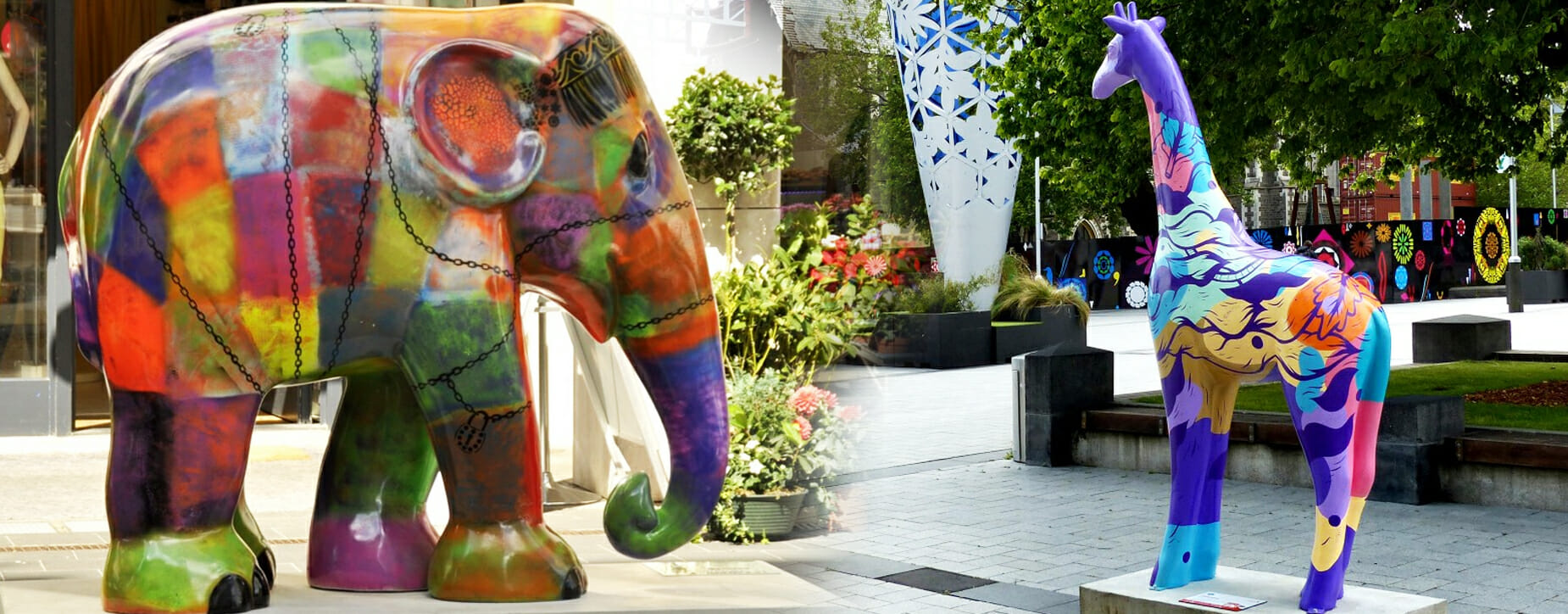 Above: city sculpture trail sculptures using a fibreglass elephant and giraffe as the base for the unique paintwork
Above: city sculpture trail sculptures using a fibreglass elephant and giraffe as the base for the unique paintwork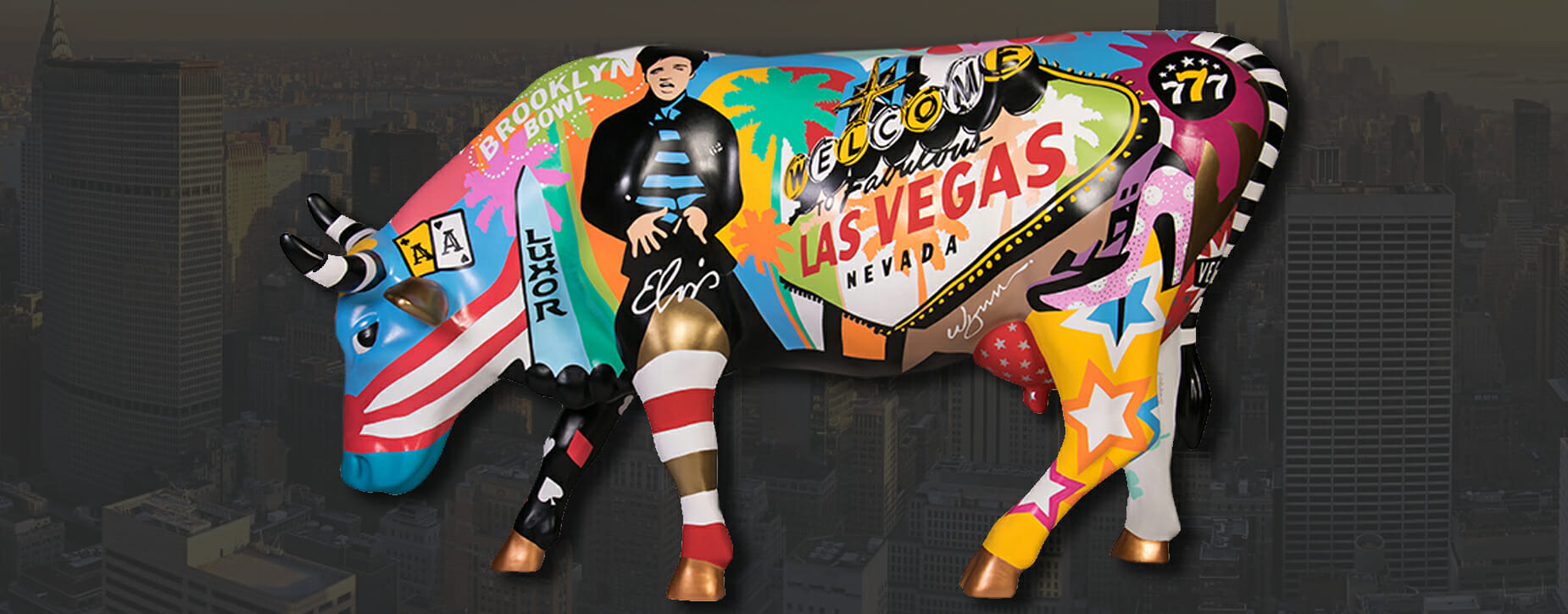 Above: an example of a cow from the Cowparade exhibitions
Above: an example of a cow from the Cowparade exhibitions 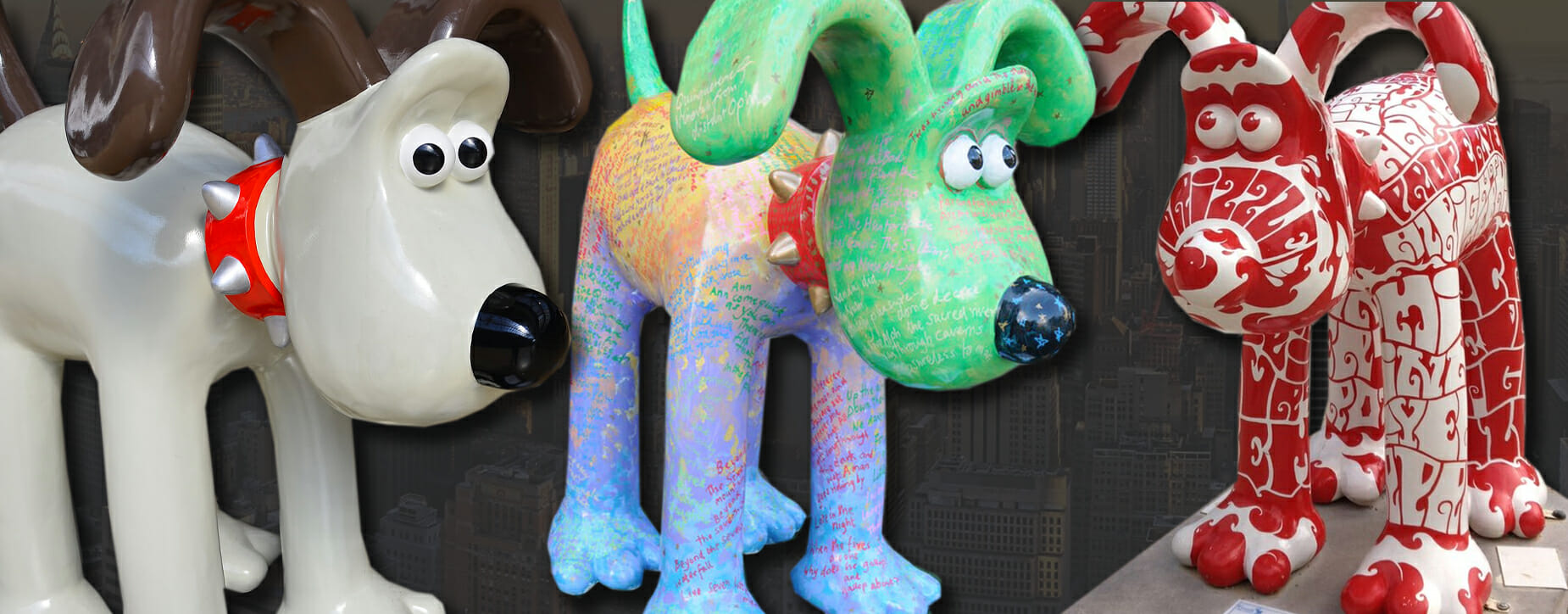 Above: a selection of the Gromit sculptures in the city trail exhibition
Above: a selection of the Gromit sculptures in the city trail exhibition 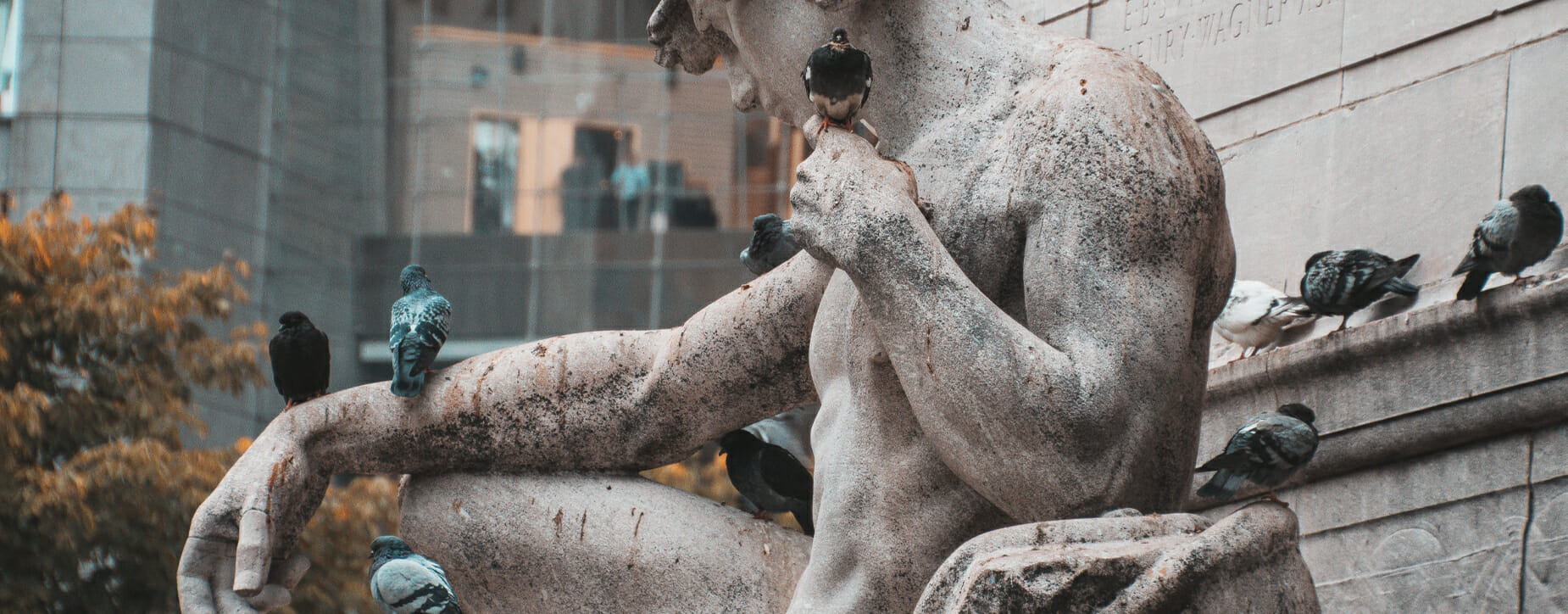 Above: all statues in city and urban areas face damage from pigeons and pollution due to acidic surface contamination
Above: all statues in city and urban areas face damage from pigeons and pollution due to acidic surface contamination 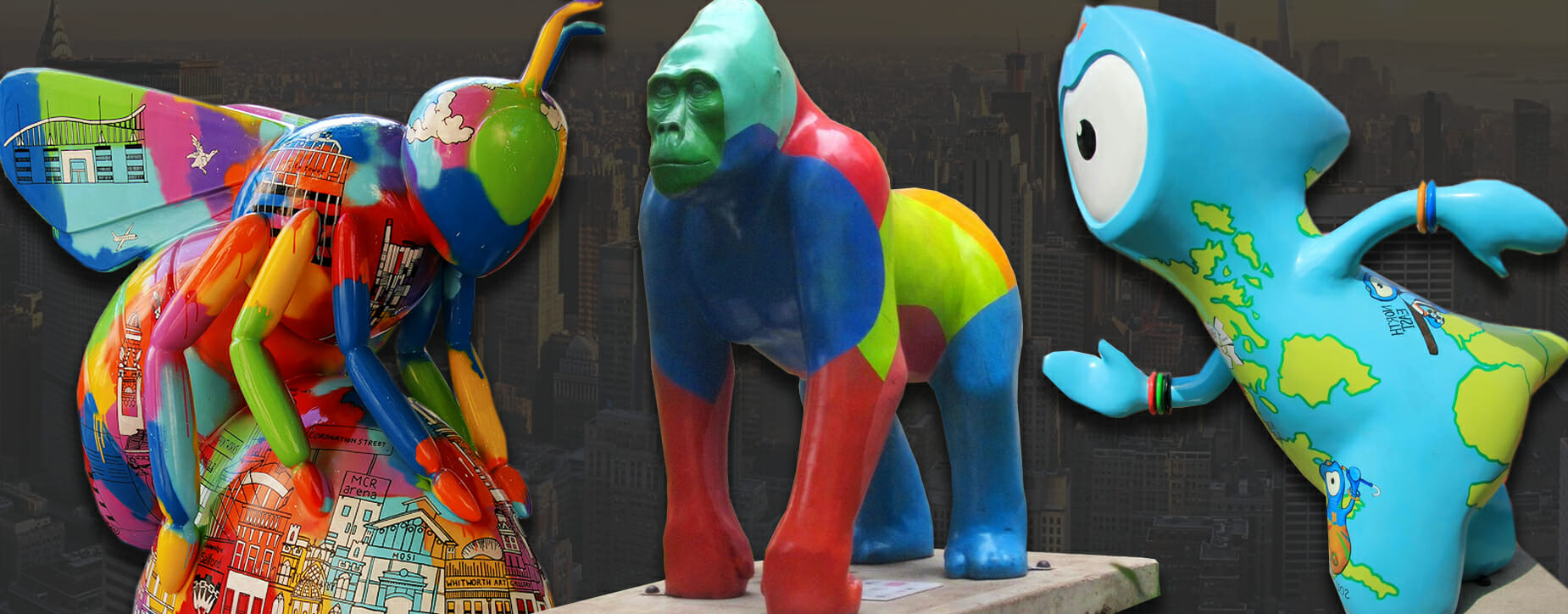 Above: City trail sculptures including examples from Bee in the City in Manchester, Wow! Gorillas in Bristol and the 2012 London Olympics
Above: City trail sculptures including examples from Bee in the City in Manchester, Wow! Gorillas in Bristol and the 2012 London Olympics 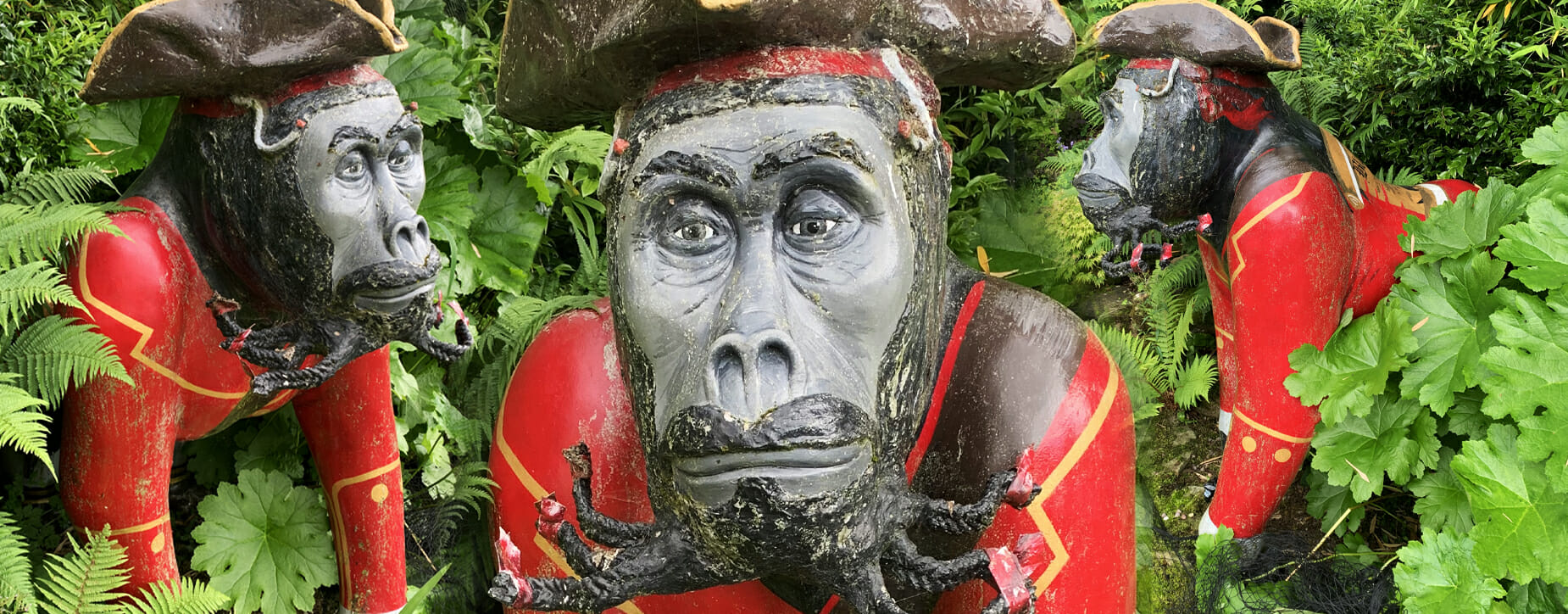 Above: the gorilla in its original location in the owner’s garden before restoration took place, damage and contamination can be seen on the surface
Above: the gorilla in its original location in the owner’s garden before restoration took place, damage and contamination can be seen on the surface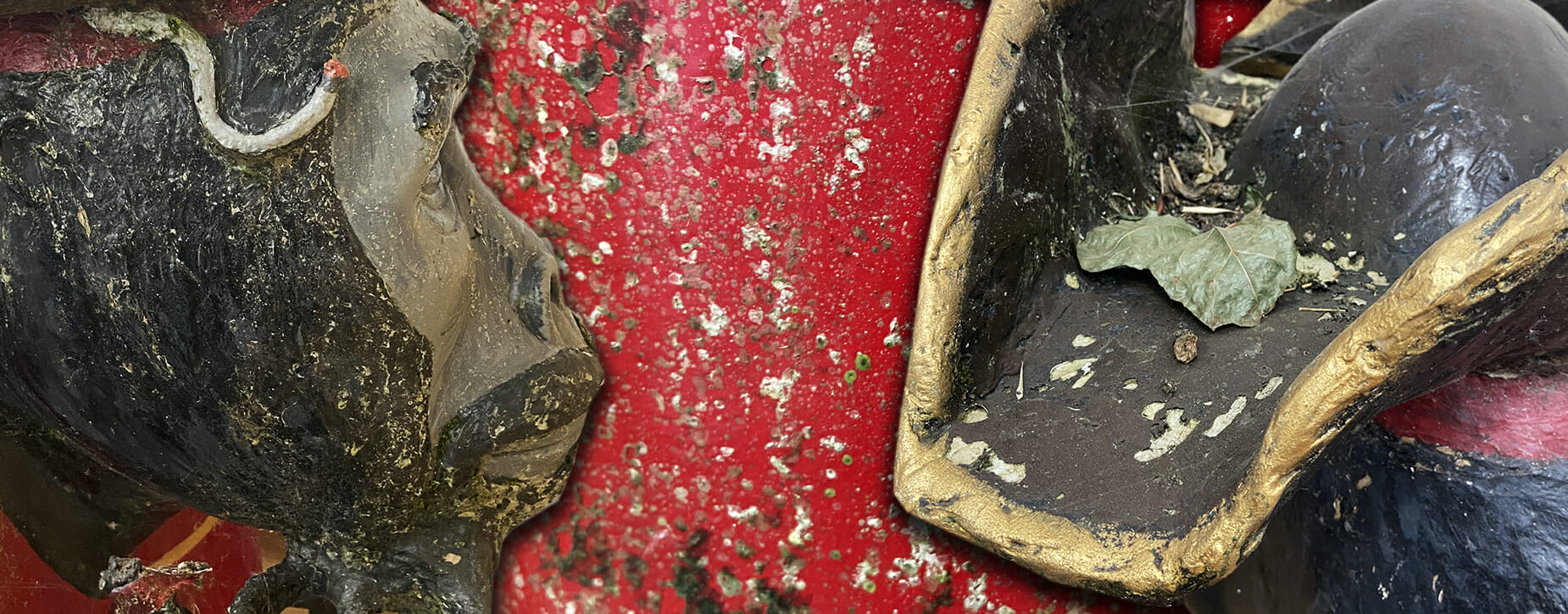 Above: contamination on the gorilla had built up over ten years of outdoor exposure in a wet garden environment
Above: contamination on the gorilla had built up over ten years of outdoor exposure in a wet garden environment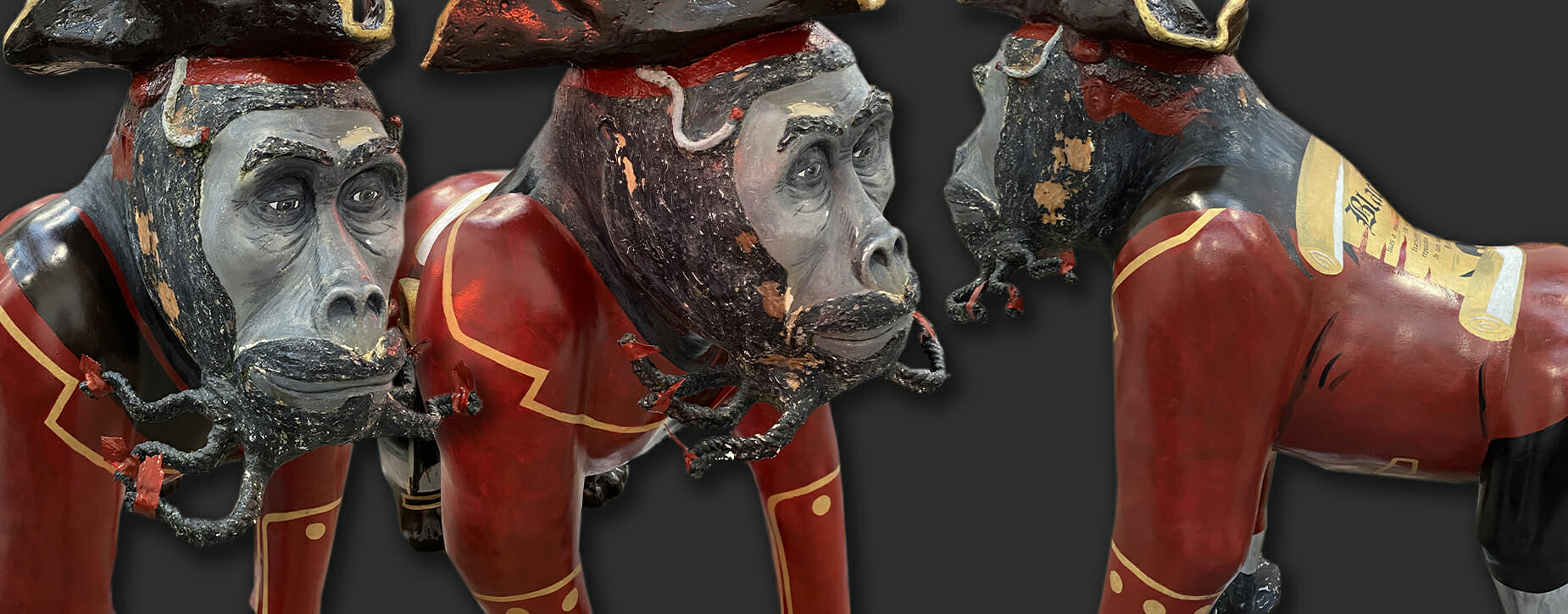 Above: the gorilla cleaned of contamination part way through the retouching process as our team stabilises damaged areas and reapplies missing pigment
Above: the gorilla cleaned of contamination part way through the retouching process as our team stabilises damaged areas and reapplies missing pigment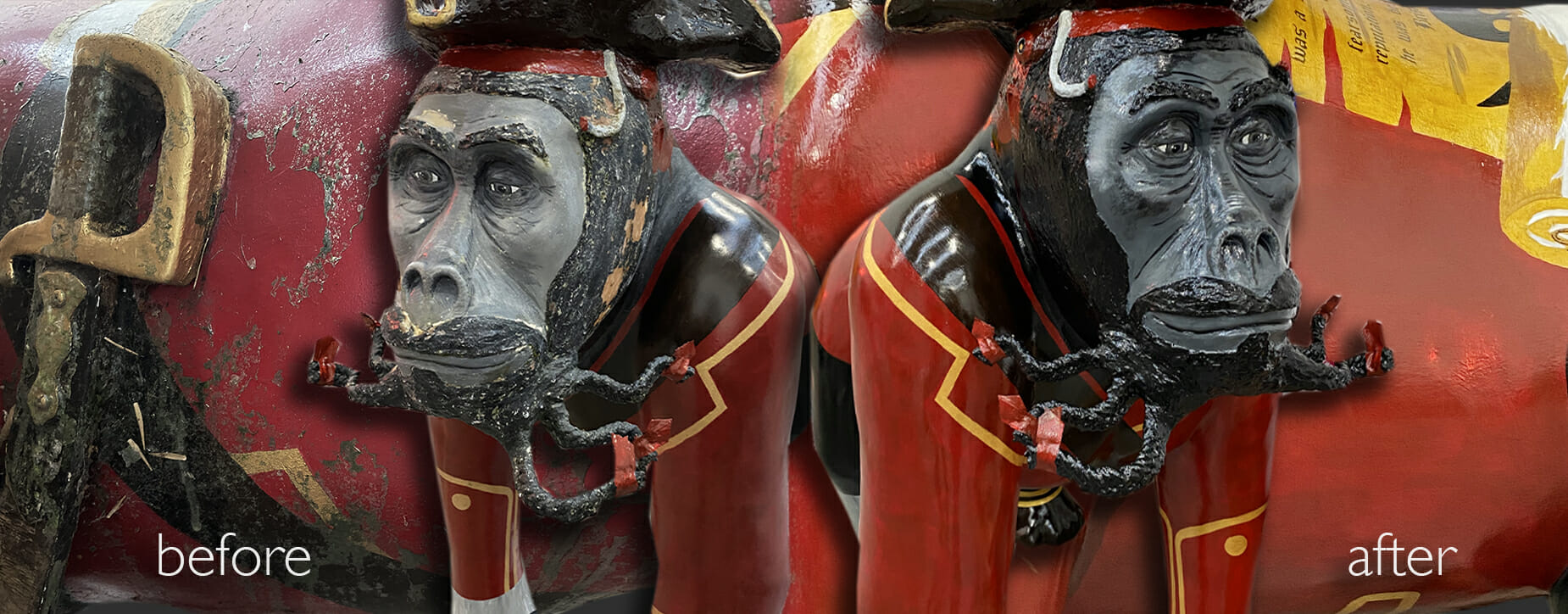 Above: the Wow! Gorilla Blackbeard before and after restoration by our team
Above: the Wow! Gorilla Blackbeard before and after restoration by our team 




